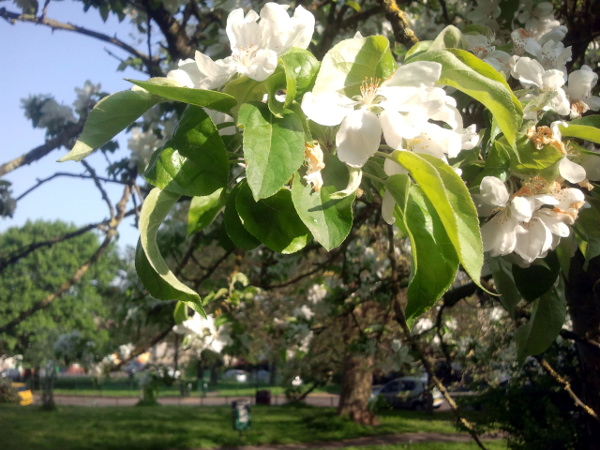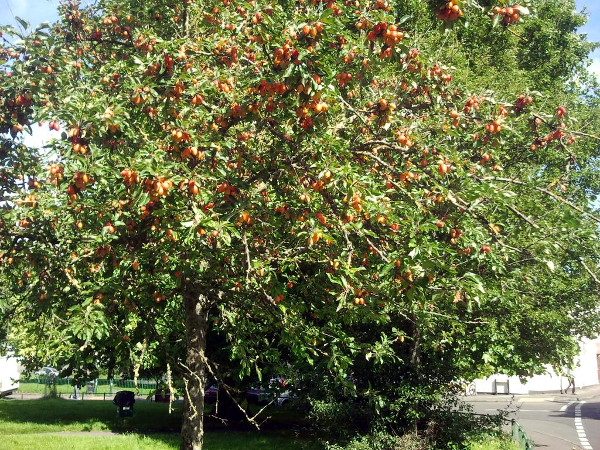On my way to the shops this fine May morning, my attention was caught by the beauty of the crab apple (Malus sylvestris) blossom on the tree in the small park that runs up the side of Bannerman Road in Easton, as shown below.

According to the Woodland Trust, the crab apple is a native UK species which thrives in heavy soil in hedgerows, woods and areas of scrub. It’s one of the ancestors of the cultivated apple and individual trees can live up to 100 years and can grow to about 10 metres in height.
The common name “crab apple” derives from the tree’s often knarled and crabbed appearance, especially when growing in exposed places.
In the autumn our local tree produces a fine crop of crab apples, as this picture from autumn 2017 shows.

Each autumn I tell myself I shall have to come and gather the fruit to make crab apple jelly. After all, it will be food for free (mostly!).
As an aide-memoire and incentive to myself, below is the recipe for (crab) apple jelly from my trusty 1950s vintage recipe book (hence the imperial measurements. Ed.).
Ingredients
- 4 lbs crab or cooking apples
- 2 pints water
- 1 stick cinnamon, or
- A few cloves, or
- Strips of lemon rind
- 1 lb of sugar per pint of juice obtained
Method
Wash the apples and wipe. Cut into quarters, but do not remove the skin or core. Put the fruit into a pan with the water and the cinnamon, cloves or lemon peel tied in a piece of muslin. Stew until the fruit is soft. Test for pectin. Remove the muslin bag. Turn the contents of the pan into a jelly bag and leave overnight to strain. Measure the juice and heat in a pan. Add 1 lb of warmed sugar to each pint of juice, stirring until all the sugar has dissolved. Bring to the boil and boil rapidly until the jelly sets when tested on a cold saucer or plate. Remove the scum. Pot and seal whilst still hot.
Before we leave apple blossom, your correspondent can’t help remembering and old song called “(I’ll Be With You In) Apple Blossom Time“, which he remembers being sung by The Andrews Sisters, which reached no. 5 in the USA in 1941.
However, the song is nearly 20 years older than the success enjoyed with it by Laverne, Maxine and Patty, having been written by Albert Von Tilzer and lyricist Neville Fleeson and copyrighted in 1920.